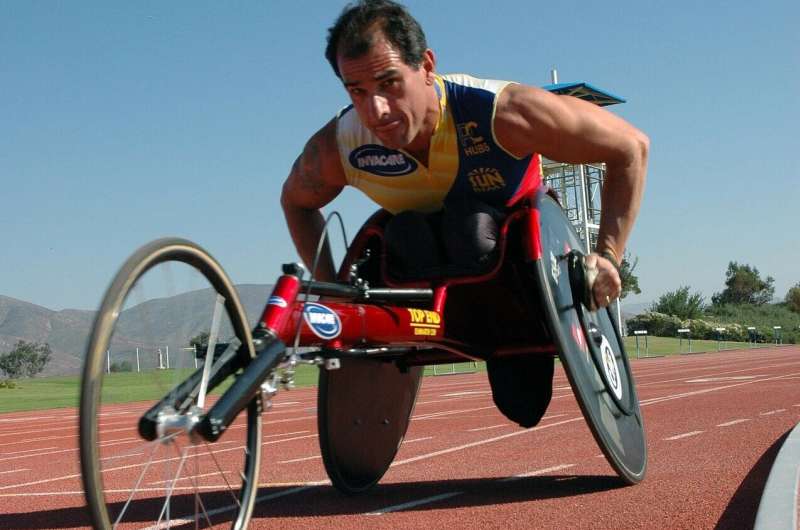This article has been reviewed according to Science X's editorial process and policies. Editors have highlighted the following attributes while ensuring the content's credibility:
fact-checked
trusted source
written by researcher(s)
proofread
How to reduce the prohibitive cost of sports wheelchairs to make sports more inclusive

The Paris 2024 Paralympic Games has a record number of broadcasters in more than 160 countries and territories. Viewing figures are expected to top the Tokyo 2020 Games, which was shown in 154 countries and attracted 4.1 billion viewers—half the global population.
The growing popularity of disability sports is a potent tool for empowerment. With 22 sports gaining visibility on the summer Paralympic program, the event is a significant step towards inspiring the 1.3 billion people worldwide who have a significant disability.
Alongside popular athletics and water-based sports, there are several highly engaging wheelchair sports, such as rugby and basketball.
But the sad fact is that many of the 80 million wheelchair users globally will have never had a chance to play these sports—mainly because of the cost of the wheelchairs.
In the UK, sports wheelchairs start at around £500, rising to thousands of pounds. With such prohibitive prices, it's perhaps unsurprising that people with disabilities are twice as likely not to be involved in a sport or exercise club compared to those without disability—reducing personal fitness and the social benefits of being part of a sports team.
Innovation for inclusion
My research sought to overcome this problem by developing an affordable plastic wheelchair for primary-school children. The design is lightweight, durable and inexpensive.
Innovations in wheelchair design can provide a low-cost route into the sport. Schools, for example, are more likely to be able to afford to have a class set stacked up in the cupboard, enabling wider participation in wheelchair sports.
Beyond the inexpensive entry chairs, advances in additive manufacturing or 3D printing—a process in which a digital file is used to create a three-dimensional solid object—will also play a part in the future at the highest level of sporting competition. This has been seen in the Team GB Olympic track bike, which has various 3D printed parts (crank, seat stay bridge and dropouts). My research investigates ways this technology can be adopted and used in wheelchair design and manufacture.
This means you can design a bespoke wheelchair for a player, considering the optimal fit, size, weight and regulation. Then, instead of shipping a wheelchair around the world, it could be printed on-site. Spare parts could then also be printed when needed.
To show how this could work, my research team 3D-printed a child's bespoke wheelchair out of metal. The design optimized the material usage while maintaining strength and impact resistance.
Bespoke wheelchair design could be a gamechanger for users, not only at the highest level of competition, but also for everyday users who often have inadequate chairs to meet their needs. A secondary benefit would be the reduction in the need for global shipping and the associated carbon footprint.
There is room for technological innovation to improve the experience of wheelchair sports at the entry level and the highest levels. But beyond the design of the chair, better access to these sports is needed in schools as part of the curriculum.
New guidance to schools published in March 2024 highlighted examples of schools where staff ensure that pupils with special educational needs and disabilities can participate in PE. For instance, buying equipment for accessible activities like boccia and goalball to let pupils with disabilities, such as muscular dystrophy and Down's syndrome, participate in school sports.
There are some fantastic examples of schools, colleges and other providers engaging with wheelchair sports. But wouldn't it be great if all children had equal access to sport, with all the benefits it provides?
After watching a nail-biting wheelchair rugby or basketball match in Paris this summer, children with disabilities should be able to experience the sports for themselves. Low-cost sports wheelchairs could help make that happen.
This article is republished from The Conversation under a Creative Commons license. Read the original article.![]()




















